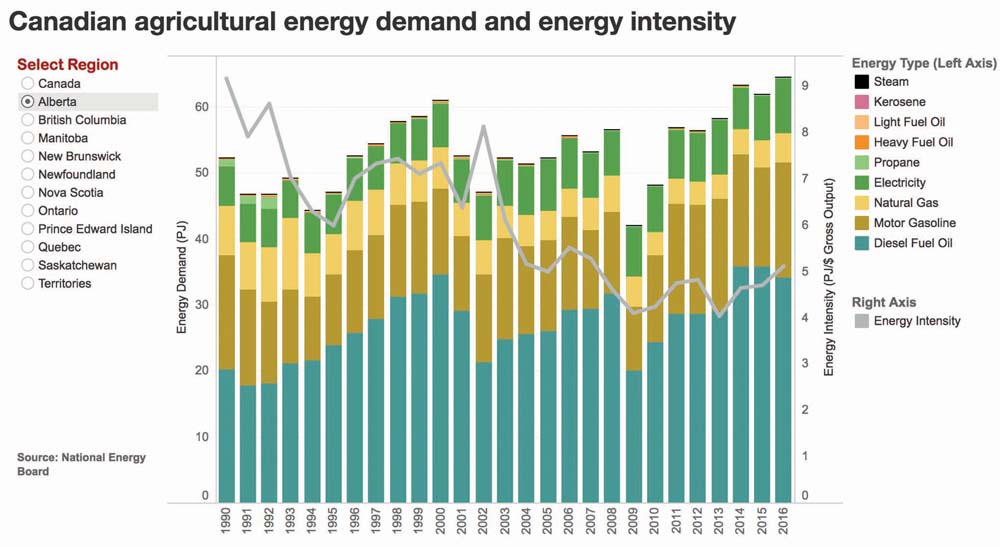Can you use more energy and less energy at the same time?
Canadian farmers have managed to pull it off.
Mind you, that’s a bit of a misnomer. What Canadian farmers have actually done is chop the amount of energy they consume per dollar of output by 17 per cent over 26 years. Non-intuitively, this news comes at a time when energy demand in the ag sector is at an all-time high. But how did they do it? More efficient practices.
“While energy demand from the agricultural sector is growing overall, the sector is also becoming more fuel efficient like many other Canadian industries,” said the National Energy Board (NEB), which conducted the study on energy consumption and intensity of general agricultural activities.
“But the sector is changing. For instance, while the number of agricultural operations is decreasing, their sizes, production levels and the size of their machinery are increasing.”

The results of the study — based on data collected from 1990 to 2016 — can be found on the board’s website (search for ‘Market Snapshot’ and click on the May 22 entry). It features an interactive graph in which a user can select their province or territories (which are grouped together) to see how they performed individually.
According to the board, the energy intensity of Canadian agricultural operations decreased from six petajoules (PJ) required for each million dollars of gross agricultural output in 1990 to five PJ required for the same amount in 2016. Meanwhile, ag energy demand increased from roughly 200 PJ in 1990 to approximately 300 PJ by 2016.
The majority of energy demand came from diesel fuel, regular gasoline, natural gas, and electricity.
Read Also

Prairie winter snowfall forecast 2025-2026
How much snow should farmers in Alberta and elsewhere on the Canadian Prairies expect for the rest of December 2025 and into January-February 2026?
A petajoule is the equivalent of one million billion joules (a common measurement of energy) or 278 gigawatt hours. In this study, energy intensity was defined as petajoules of energy demand per million Canadian dollars in gross output.
In something of a disclaimer, the NEB emphasized that the Canadian energy use and demand data represents a high-level overview.
“Canadian agriculture is as diverse as Canada’s geography. As a result, the energy needs of dairy farming in central Canada is not the same as the energy needs of fisheries in Atlantic Canada, nor grain farmers in the Prairies.”
Don Smith, vice-president of petroleum with UFA and a fuel efficiency expert, said he would expect this data to be the result of a number of factors, including efficiencies gained by running larger equipment, reduced tillage, straight-cut harvesting, and other techniques.
“More efficient farming practices along with increased yields, on average, due to better genetics and more precise farming practices would result in a lower energy intensity per output,” he said.
















